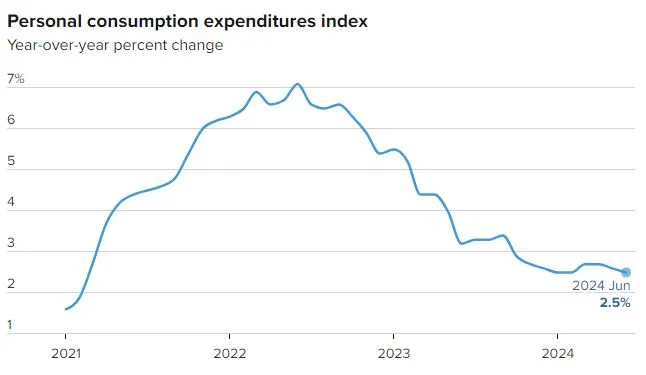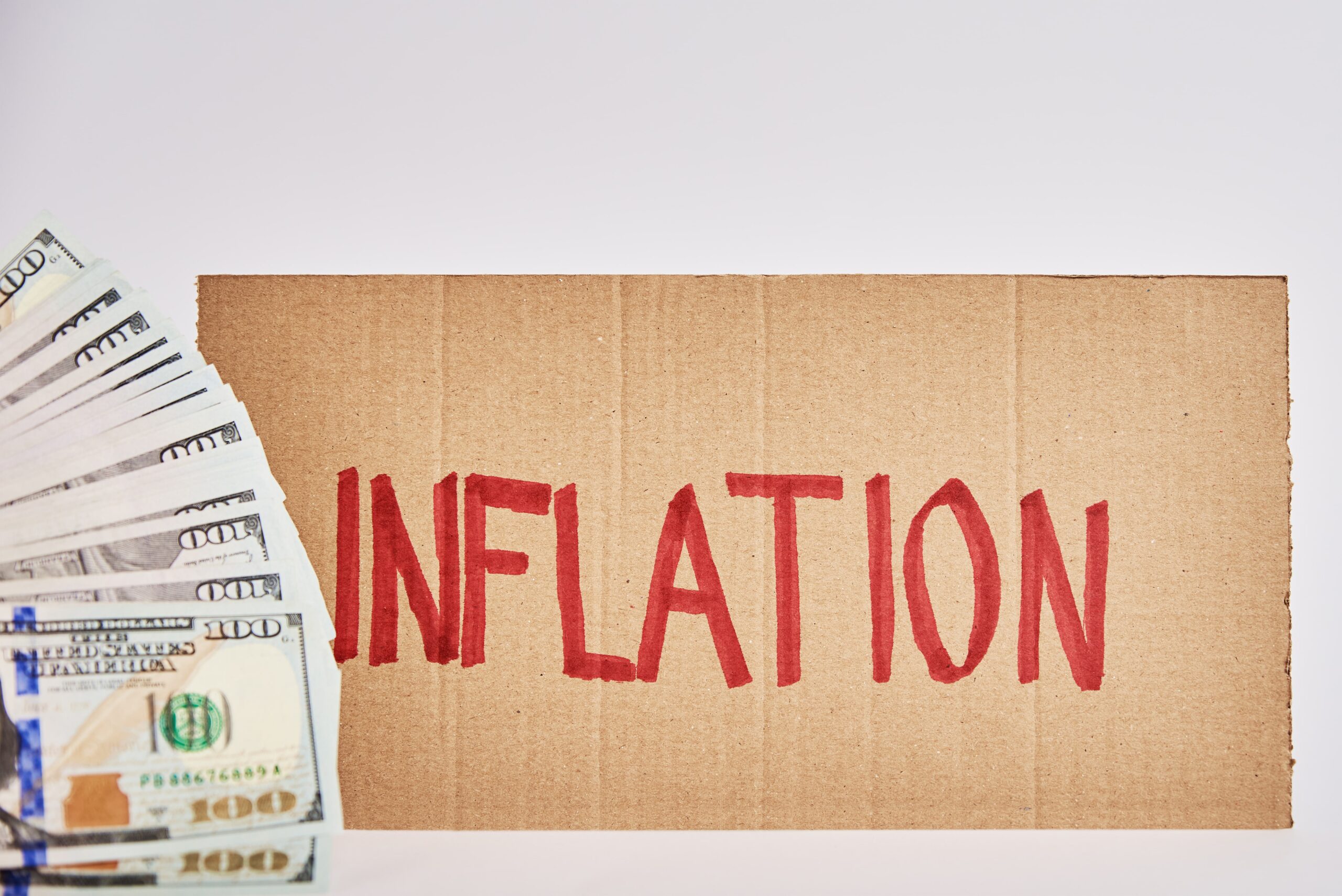The latest data on the inflation gauge offers a glimmer of hope for economic stability. The Federal Reserve is eyeing a potential path to interest rate cuts. The personal consumption expenditures price index (PCE), the Fed’s preferred inflation gauge, has shown promising signs of easing. This change comes as a welcome relief for both policymakers and consumers alike.
June’s Inflation Data: A Positive Outlook
In June, the personal consumption expenditures price index increased by a modest 0.1%. Annually, it rose by 2.5%, aligning with Dow Jones estimates. This slight decline from May’s 2.6% annual increase indicates a gradual cooling of inflation pressures. The core inflation, which excludes volatile food and energy prices, also mirrored this trend. It showed a 0.2% monthly increase and a 2.6% annual rise, both in line with expectations. These figures suggest a stabilizing economic environment, potentially paving the way for Federal Reserve interest rate cuts.
Impact on Personal Income and Spending Trends

Source: CNBC
Despite the positive news on inflation, personal income growth lagged, rising just 0.2%, below the expected 0.4%. However, personal spending showed resilience, increasing by 0.3%, meeting forecasts. This balance between income and spending is crucial. It supports the broader economic expansion. The personal savings rate, however, fell to 3.4%, its lowest since November 2022. This trend underscores the importance of monitoring personal income and spending trends closely. These trends influence the Fed’s decisions on monetary policy.
The Role of Core Inflation in Economic Stability
Core inflation, a critical measure for the Federal Reserve, provides a clearer picture of long-term inflation trends. By excluding food and energy prices, which can be highly volatile, core inflation offers a more stable indicator. The steady rise in core inflation by 0.2% monthly and 2.6% annually reflects underlying economic stability. This stability is essential for the Federal Reserve. It guides their approach to interest rate adjustments. By focusing on core inflation, the Fed can make more informed decisions about future rate cuts.
Market Reactions and Future Expectations
The release of the latest inflation data had an immediate impact on financial markets. Stock market futures pointed to a positive opening on Wall Street. Treasury yields moved lower, reflecting increased optimism among investors. Futures markets are now pricing in a more aggressive path for Federal Reserve interest rate cuts. This shift indicates growing confidence that the Fed will cut rates at its September meeting, the first such move since the early days of the Covid pandemic. The markets’ positive reaction underscores the importance of the inflation gauge in shaping economic expectations.
Federal Reserve’s Deliberations on Rate Cuts
The Federal Open Market Committee (FOMC) is set to meet next week. While a rate cut at this meeting remains unlikely, the door appears open for September. Fed officials have emphasized that their decisions will be data-driven, with no predetermined policy path. The recent inflation data, coupled with resilient personal income and spending trends, bolsters the case for a rate cut later this year. However, the Fed remains cautious. They stress that any decisions will depend on ongoing economic assessments and data trends.
The Broader Economic Implications
A reduction in interest rates would have widespread implications for the economy. Lower rates would reduce borrowing costs for consumers and businesses. This would likely stimulate spending and investment. This, in turn, could boost economic growth. However, the Fed must balance these benefits against the risk of rekindling inflation. By closely monitoring the inflation gauge and other key indicators, the Fed aims to strike the right balance. Their goal is to sustain economic growth without triggering runaway inflation.
Goods and Services Prices: A Mixed Picture
The latest data revealed mixed trends in goods and services prices. Goods prices fell by 0.2% in June, while services prices increased by 0.2%. Housing-related prices rose by 0.3%, marking a slowdown from previous months. These variations highlight the complexities of the inflation landscape. They underscore the need for a nuanced approach to monetary policy. By considering the diverse trends in goods and services prices, the Fed can better understand the broader inflation dynamics.
Historical Context and Policy Shifts
The Fed’s recent policy shifts come against a backdrop of historical inflation highs. In mid-2022, inflation reached its highest level in over 40 years. In response, the Fed embarked on a series of aggressive rate hikes. These hikes aimed to curb inflationary pressures and stabilize the economy. Over the past year, however, the Fed has paused further rate increases. They are now assessing the impact of these earlier measures. The recent cooling in the inflation gauge suggests that these efforts are bearing fruit. It provides a stronger case for a shift towards rate cuts.
Future Projections and Market Sentiment
Looking ahead, futures markets indicate a high likelihood of rate cuts in September, November, and December. According to the CME Group’s FedWatch measure, there is about a 90% chance of a September reduction. This reflects growing confidence in the Fed’s ability to manage inflation. It also highlights the importance of the inflation gauge in shaping market sentiment. Investors and analysts will continue to closely monitor inflation data. Their focus will be on how it influences the Fed’s policy decisions.
Conclusion: A Delicate Balance
The recent inflation data offers a cautiously optimistic outlook for the economy. The easing in the inflation gauge, particularly the personal consumption expenditures price index, provides a basis for potential Federal Reserve interest rate cuts. However, the Fed must navigate this path carefully. They need to balance the benefits of lower rates against the risk of reigniting inflation. By closely monitoring personal income and spending trends, core inflation, and other key indicators, the Fed aims to sustain economic stability. The upcoming FOMC meetings will be critical in determining the future course of monetary policy. The decisions made will have significant implications for the broader economy.
Click here to read our latest article Paris Olympics Sabotage

